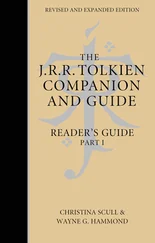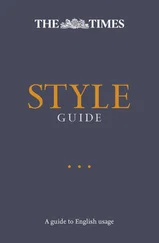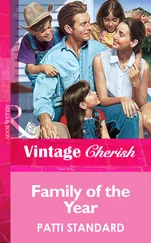Standard Template Library Programmer's Guide
Здесь есть возможность читать онлайн «Standard Template Library Programmer's Guide» весь текст электронной книги совершенно бесплатно (целиком полную версию без сокращений). В некоторых случаях можно слушать аудио, скачать через торрент в формате fb2 и присутствует краткое содержание. Жанр: Программирование, Справочники, на английском языке. Описание произведения, (предисловие) а так же отзывы посетителей доступны на портале библиотеки ЛибКат.
- Название:Standard Template Library Programmer's Guide
- Автор:
- Жанр:
- Год:неизвестен
- ISBN:нет данных
- Рейтинг книги:4 / 5. Голосов: 1
-
Избранное:Добавить в избранное
- Отзывы:
-
Ваша оценка:
- 80
- 1
- 2
- 3
- 4
- 5
Standard Template Library Programmer's Guide: краткое содержание, описание и аннотация
Предлагаем к чтению аннотацию, описание, краткое содержание или предисловие (зависит от того, что написал сам автор книги «Standard Template Library Programmer's Guide»). Если вы не нашли необходимую информацию о книге — напишите в комментариях, мы постараемся отыскать её.
Standard Template Library Programmer's Guide — читать онлайн бесплатно полную книгу (весь текст) целиком
Ниже представлен текст книги, разбитый по страницам. Система сохранения места последней прочитанной страницы, позволяет с удобством читать онлайн бесплатно книгу «Standard Template Library Programmer's Guide», без необходимости каждый раз заново искать на чём Вы остановились. Поставьте закладку, и сможете в любой момент перейти на страницу, на которой закончили чтение.
Интервал:
Закладка:
[2] Keys are not required to be Equality Comparable: associative containers do not necessarily use operator== to determine whether two keys are the same. In Sorted Associative Containers, for example, where keys are ordered by a comparison function, two keys are considered to be the same if neither one is less than the other.
[3] Note the implications of this member function: it means that if two elements have the same key, there must be no elements with different keys in between them. The requirement that elements with the same key be stored contiguously is an associative container invariant.
Simple Associative Container, Pair Associative Container, Unique Associative Container, Multiple Associative Container, Sorted Associative Container, Unique Sorted Associative Container, Multiple Sorted Associative Container, Hashed Associative Container, Unique Hashed Associative Container, Multiple Hashed Associative Container.
Simple Associative Container
Category: containers
Component type: concept
A Simple Associative Container is an Associative Container where elements are their own keys. A key in a Simple Associative Container is not associated with any additional value.
Associative Container
None, except for those described in the Associative Container requirements. Simple Associative Container, however, introduces two new type restrictions.
| Key type | X::key_type |
The type of the key associated with X::value_type . The types key_type and value_type must be the same type. |
| Iterator | X::iterator |
The type of iterator used to iterate through a Simple Associative Container's elements. The types X::iterator and X::const_iterator must be the same type. That is, a Simple Associative Container does not provide mutable iterators. [1] |
XA type that is a model of Simple Associative Container
aObject of type X
kObject of type X::key_type
p, qObject of type X::iterator
None, except for those defined in the Associative Container requirements.
| Immutability of Elements | Every element of a Simple Associative Container is immutable. Objects may be inserted and erased, but not modified. [1] |
• set
• multiset
• hash_set
• hash_multiset
[1] This is a consequence of the Immutability of Keys invariant of Associative Container. Keys may never be modified; values in a Simple Associative Container are themselves keys, so it immediately follows that values in a Simple Associative Container may not be modified.
Associative Container, Pair Associative Container
Pair Associative Container
Category: containers
Component type: concept
A Pair Associative Container is an Associative Container that associates a key with some other object. The value type of a Pair Associative Container is pair . [1]
Associative Container
One new type is introduced, in addition to the types defined in the Associative Container requirements. Additionally, Pair Associative Container introduces one new type restriction
| Key type | X::key_type |
The type of the key associated with X::value_type . |
| Data type | X::data_type |
The type of the data associated with X::value_type . A Pair Associative Container can be thought of as a mapping from key_type to data_type . |
| Value type | X::value_type |
The type of object stored in the container. The value type is required to be pair . |
XA type that is a model of Pair Associative Container
aObject of type X
tObject of type X::value_type
dObject of type X::data_type
kObject of type X::key_type
p, qObject of type X::iterator
None, except for those defined in the Associative Container requirements.
• map
• multimap
• hash_map
• hash_multimap
[1] The value type must be pair , rather than pair , because of the Associative Container invariant of key immutability. The data_type part of an object in a Pair Associative Container may be modified, but the key_type part may not be. Note the implication of this fact: a Pair Associative Container cannot provide mutable iterators (as defined in the Trivial Iterator requirements), because the value type of a mutable iterator must be Assignable, and pair is not Assignable. However, a Pair Associative Container can provide iterators that are not completely constant: iterators such that the expression (*i).second = d is valid.
Associative Container, Simple Associative Container
Sorted Associative Container
Category: containers
Component type: concept
A Sorted Associative Container is a type of Associative Container. Sorted Associative Containers use an ordering relation on their keys; two keys are considered to be equivalent if neither one is less than the other. (If the ordering relation is case-insensitive string comparison, for example, then the keys "abcde" and "aBcDe" are equivalent.)
Sorted Associative Containers guarantee that the complexity for most operations is never worse than logarithmic [1], and they also guarantee that their elements are always sorted in ascending order by key.
Reversible Container, Associative Container
Two new types are introduced, in addition to the types defined in the Associative Container and Reversible Container requirements.
X::key_compare |
The type of a Strict Weak Ordering used to compare keys. Its argument type must be X::key_type . |
X::value_compare |
The type of a Strict Weak Ordering used to compare values. Its argument type must be X::value_type , and it compares two objects of value_type by passing the keys associated with those objects to a function object of type key_compare . |
XA type that is a model of Sorted Associative Container
aObject of type X
tObject of type X::value_type
kObject of type X::key_type
p, qObject of type X::iterator
cObject of type X::key_compare
In addition to the expressions defined in Associative Container and Reversible Container, the following expressions must be valid.
Читать дальшеИнтервал:
Закладка:
Похожие книги на «Standard Template Library Programmer's Guide»
Представляем Вашему вниманию похожие книги на «Standard Template Library Programmer's Guide» списком для выбора. Мы отобрали схожую по названию и смыслу литературу в надежде предоставить читателям больше вариантов отыскать новые, интересные, ещё непрочитанные произведения.
Обсуждение, отзывы о книге «Standard Template Library Programmer's Guide» и просто собственные мнения читателей. Оставьте ваши комментарии, напишите, что Вы думаете о произведении, его смысле или главных героях. Укажите что конкретно понравилось, а что нет, и почему Вы так считаете.











